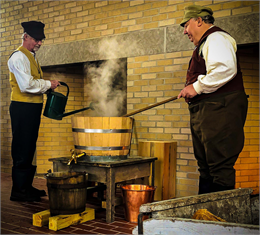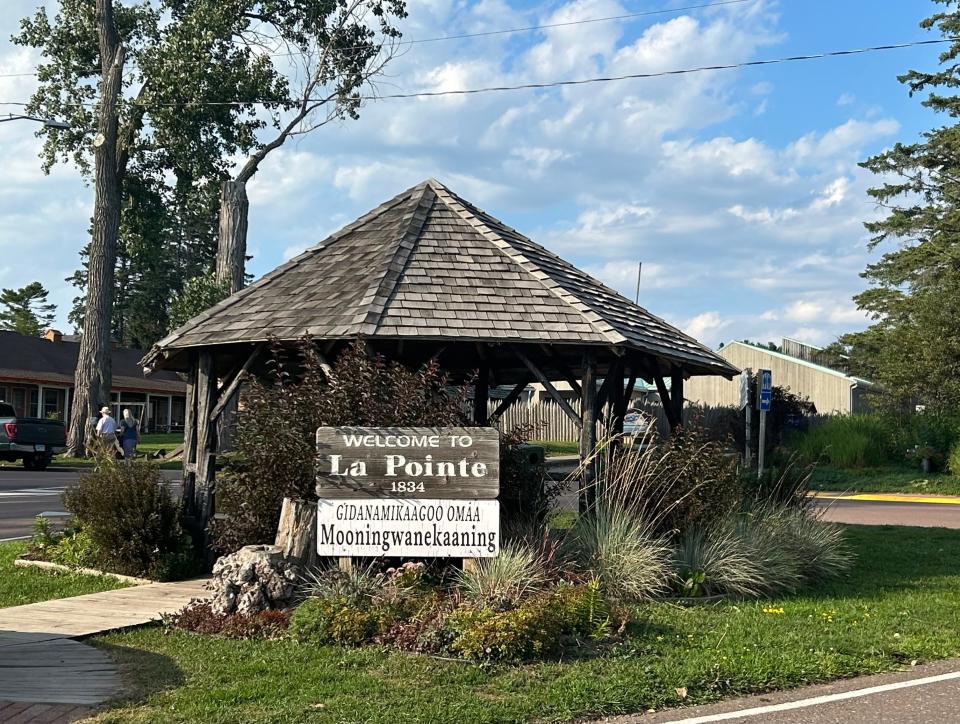Wisconsin's past is on display at the state's 12 historic sites
The Wisconsin Historical Society has designated 12 historic sites and museums in Wisconsin. According to the society's division of museums and historical sites, the locations "contain historic structures and visitor service buildings that reflect major themes of Wisconsin history, such as ethnic pioneer settlement, mining, farming, fur trade, exploration, transportation, rural life, and town development."
Here's more information about what the sites are, how they were chosen, and when they became official.
Wisconsin's historic sites
Villa Louis is the restored Victorian estate of the Dousman family, located in Prairie du Chien. It became a historic site in 1952.
Wade House is an 1860s stagecoach inn, sawmill and carriage museum in Greenbush. It became a historic site in 1953.
Stonefield is a 1900s farming village, agricultural museum and the former home of Governor Nelson Dewey, located in Cassville. It became a historic site in 1953.
Circus World Museum is a museum dedicated to circus history built on the original site of the Ringling Bros. Circus Winter Quarters in Baraboo. It also hosts circus performances in the summer months. It became a historic site in 1959.
Madeline Island Museum is made up of historical structures that tell the stories of the various groups of people who have lived on the Apostle Islands, located in La Pointe. It became a historic site in 1968.
Pendarvis is a restored Cornish miners' colony in Mineral Point, where the story of the miners is told in addition to the story of the couple who restored the village in the 1930s. It became a historic site in 1970.
Old World Wisconsin is a hands-on living history museum, with several historic buildings on site, located in Eagle. It became a historic site in 1976.
The Wisconsin Historical Museum opened in downtown Madison in 1986. It is currently closed as a new history center is being built, scheduled to open in 2026.
First Capitol in Belmont is where representatives passed the state's first 40 laws, laying the foundation for Wisconsin's state government. It became a historic site in 1994.
H.H. Bennett Studio and Museum in Wisconsin Dells tells the story of Henry Hamilton Bennett, the photographer who is credited with helping turn the Dells into a tourist destination. The studio became a historic site in 2000.
Reed School in Neillsville is a restored 1915 one-room school house. It became a historic site in 2007.
Black Point Estate & Gardens in Lake Geneva is the restored mansion of Chicago beer baron Conrad Seipp. It became a historic site in 2013.

Interest in history grows following World War II and in the lead-up to the American Bicentennial
Villa Louis was the first historic site to be designated, followed by three others in the 1950s. Nicholas Hoffman, the Wisconsin Historical Society's administrator of museums and historic sites, said some changes post World War II sparked that first batch of designations.
"After going through World War II, people were really interested in making connections with their history," Hoffman said. "And, of course, automobile culture led to increased travel and sightseeing, and historic sites became part of that growth in the tourism field."
Hoffman also said there was another period of increased interest in history in the lead-up to the American bicentennial in 1976. In Wisconsin, that celebration culminated with the opening of its living history museum, Old World Wisconsin, on July 4, 1976.
Living history museums, historically significant sites and local support
Hoffman said the sites are a mixture of places "that tell the story of a particular family or era" — such as First Capitol or Black Point Estate — and attractions that house multiple historic artifacts and buildings — such as Old World Wisconsin and the Wisconsin Historical Museum.
Sometimes the society seeks out specific sites, and sometimes people or societies recommend sites. Hoffman said the society considers a number of factors when it decides to designate a historic site. They include:
A connection to state history or something that puts Wisconsin in the broader context of the United States (such as a focus on understanding the Great Lakes)
A large collection with documentary evidence that ties to a particular time and place. "For example, Villa Louis is an incredible Italianate building with so many artifacts that are original to the Dousman family," Hoffman said. "That place is one of the greatest documented restored interiors of any place in the United States."
A facility that is well-preserved or can be readily restored
Buildings or sites that have community or financial support behind them, or places that have funding like an endowment that will help the society finance the operation of the site
A growing understanding of diverse stories

The historic sites represent more than just one period of Wisconsin history; the featured stories also reflect the thoughts and culture of the time in which they were added.
For that reason, some of the historical markers and stories focus on post-colonial people who settled in the area. A growing recognition that some people's stories have been silenced is influencing the stories the society is working on, including now and in the future.
One example is changing the historical marker at the Madeline Island museum that focuses on French settlers without mentioning the Ojibwe people who lived there before. And the society is working with archaeological teams at Old World Wisconsin to tell the story of a Black person who settled on a piece of land on Old World Wisconsin property in the pre-Civil War era.
"And at Villa Louis, most people associate that site with the incredible tour of the Dousman mansion, but that piece of property has layers of history from battlefields during the War of 1812 to the history of free and enslaved Black people who lived there to an area where native nations lived for millennia," Hoffman said. "We're working on a key project to tell a fuller history of that property."
This article originally appeared on Milwaukee Journal Sentinel: Wisconsin's past is on display at the state's 12 historical sites

